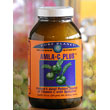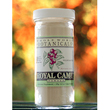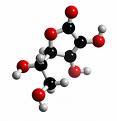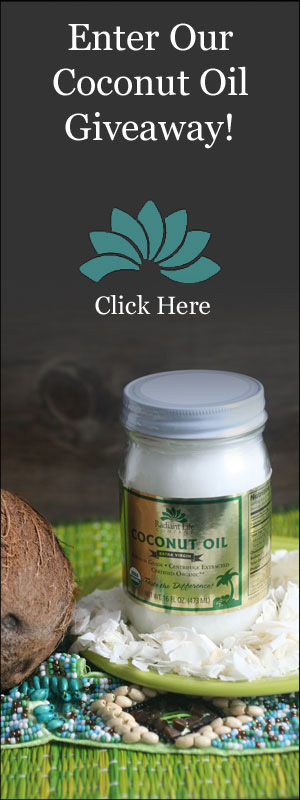 |
 |
 |
 |
| Amla C | Pure Radiance C | Camu Camu | Ascorbic Acid |
By Michael and Nora Wohlfeld
Have you ever gone shopping for a car and settled on buying a steering wheel? No one would consider a steering wheel to be a whole car, but it is part of a car. To take this a step further, imagine that you go from one parts store to another and pick up fenders at one place, engine parts, transmission parts, tires, wheels, and seats, all at different places. If you take all of these parts home, would you have a car? Obviously not. In order to, have a car that runs effectively, you should purchase it from its creator: General Motors, Toyota, Ford, or whatever car manufacturer you choose. A car manufacturer has done the research and planning to ensure that the parts of a car are designed appropriately and assembled in the right way so that everything works together. The finished product will be a car that you can drive safely and efficiently.
This scenario may sound ridiculous but most people go to health food stores, drug stores and supermarkets and buy Vitamin C in the same way that one would go out shopping for a car and decide to buy only the steering wheel, thinking it was the whole car. Thousands of bottles of ascorbic acid are purchased every day under the misguided assumption that ascorbic acid is the same as natural Vitamin C. In reality, ascorbic acid is an isolated nutrient that is part of Vitamin C, but it is not the whole-food Vitamin C.
So you are getting cheated if you buy ascorbic acid thinking it is natural whole-food Vitamin C. But that might be the least of the consequences you may suffer. Studies over the last several years have demonstrated that people who take high doses of ascorbic acid actually put themselves at risk for a number of health challenges. One study demonstrated that doses of 500 mg a day or more of ascorbic acid increase the incidence of arterial plaque buildup. Another study indicated that gallstones are more likely to appear in those taking ascorbic acid. Are these backlash studies against the health food industry? No, they are legitimate studies.
Wait a minute, you may be thinking. What about all the studies done by Linus Pauling and a multitude of other reputable researchers who have proven the health promoting benefits of Vitamin C and ascorbic acid? Let us put a little perspective on the subject.
Back in the 1930’s ascorbic acid was isolated out of little red peppers. The man who first performed this experiment was Dr. Albert Szent-Gyorgyi who won a Nobel Prize for his work. What he also found, which has mostly been ignored until recently, was that ascorbic acid was far more biologically available and active while it was still in the red pepper.
Scientist of the era of “Better Living Through Chemistry and Science” (which we have been experiencing for the last fifty years) decided to take the discoveries about Vitamin C and “improve” on Mother Nature. First they found that extracting ascorbic acid from natural foods, such as the red peppers, cabbage, cranberries, gooseberries, or acerola berries, is relatively expensive. Ascorbic acid can be created in the laboratory much less expensively (and of course much more profitably). Scientists discovered that they could take corn syrup, mix it with hydrochloric acid, and voila: ascorbic acid! (By the way, the corn is more likely than ever to be genetically modified and of course not organically grown.) Years later, scientists discovered what Dr. Szent-Györgyi had discovered about ascorbic acid, it is not as effective when detached from the whole food matrix! So they went about trying to determine what other factors there could be in the whole food that would make the ascorbic acid work better. First, they discovered the importance of bioflavonoids, so they figured out how to produce these synthetically in the laboratory, to be added to the ascorbic acid. Then they found that ascorbic acid worked better as a mineral ascorbate and they worked on that! Then they found that fat-soluble ascorbic acid was superior because it went directly to the liver vs. water-soluble ascorbic acid. In fact if you put 100 mg of ascorbic acid in the body, within a few hours at least 90% of it would be excreted in the urine. If you put 10 times more into the body to account for a 90% loss it would cause diarrhea. So they experimented with various things and concluded that if you attach the ascorbic acid molecule to another molecule, in one case a metabolite, the ascorbic acid will stay in the body longer (they didn’t seem to care why it stayed in the body longer, but it stayed in the body longer and hopefully that was a good thing). Today there is a broad variety of ascorbic acid products with various things attached to them. With all this research, time, thought and dollars being put into creating a synthetic vitamin C, the fact remains that none of them can come even close to the potentials of what Mother Nature makes. One important factor that science has not been able to duplicate is the special kind of energy that holds living food together. Whether this energy is found in the enzymes or in the energy patterns of whole food structures, it is unlikely that science will ever be able to reproduce it in a laboratory. This may be one of several reasons why studies have shown that the body will absorb close to 100% of the natural Vitamin C that is consumed as part of whole food, whereas barely 10% of the “stripped down” ascorbic acid is absorbed.
Again it is an issue of what we are willing to put into our bodies. Just as you would not shop for a car by buying the various pieces at different places, but look for a whole vehicle that has been synergistically put together by its creator/manufacturer, so Mother Nature has created foods for us that are complex and exactly designed to work in a synergistic way with the design of our bodies.
 |
 |
 |
 |
From Radiant Life: If you want a true Vitamin C product the way nature intended, discover Amla Plus, Pure Radiance C, Royal Camu, and Acerola. You'll be glad you did!
Related Information


